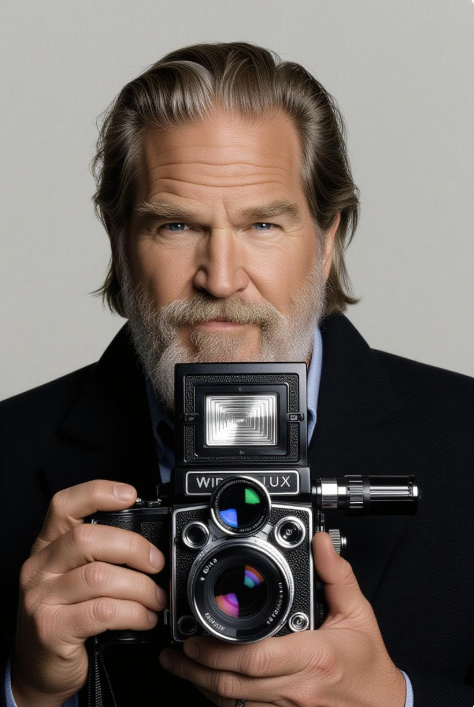The clock is ticking for Tesla as federal safety regulators dig deep into the company’s ambitious plans to roll out robotaxis in Austin, Texas. What was supposed to be Elon Musk’s triumphant step toward the future of transportation has instead become a high-stakes game of regulatory chess, with serious questions about whether Tesla’s self-driving technology is ready for prime time.
The Latest Development That Has Everyone Talking
U.S. highway safety regulators are reviewing answers Tesla gave in response to the agency’s questions about the safety of its self-driving robotaxi in poor weather, ahead of plans to deploy the vehicles as soon as this weekend. The National Highway Traffic Safety Administration (NHTSA) isn’t just rubber-stamping Tesla’s plans they’re putting the company through a rigorous examination that could make or break Musk’s robotaxi timeline.
This isn’t just another bureaucratic hurdle. We’re talking about a technology that could fundamentally change how millions of Americans get around every day. The stakes couldn’t be higher, and the questions being asked aren’t just technical – they’re about life and death safety on our roads.
Why Austin Became Ground Zero for Tesla’s Robotaxi Revolution
Tesla CEO Elon Musk told CNBC Tuesday the company is on track to launch a modest fleet of 10 or 12 robotaxis in Austin next month. But why Austin? The answer reveals a lot about Tesla’s strategy and the current state of autonomous vehicle regulation in America.
Texas has become known for its business-friendly, anti-regulation approach to emerging technologies. For Tesla, this represents the path of least resistance to get their robotaxis on the road. Austin serves as Tesla’s operational headquarters, making it a natural testing ground where the company has maximum control and familiarity with local conditions.
However, this regulatory-light environment is exactly what has safety advocates worried. Public-safety officials are increasingly concerned about the state’s anti-regulation stance toward autonomous vehicles. The concern is that Texas might be prioritizing innovation over public safety, potentially putting everyday drivers and pedestrians at risk.
The Federal Government Steps In
The NHTSA’s involvement represents a significant escalation in federal oversight of autonomous vehicles. U.S. auto safety investigators asked Tesla to answer questions on its plans to launch a paid robotaxi service in Austin, Texas, in June, in order to assess how the electric vehicle maker’s cars with full self-driving technology will perform in poor weather.
This focus on weather performance isn’t random. Poor weather conditions represent one of the most challenging scenarios for autonomous driving systems. Rain, snow, fog, and other adverse conditions can significantly impact sensor performance, making it harder for vehicles to “see” their surroundings and make safe driving decisions.
The fact that federal regulators are specifically asking about weather performance suggests they’re aware of potential blind spots in Tesla’s Full Self-Driving (FSD) technology. This isn’t just about whether the cars can drive themselves on a sunny day – it’s about whether they can handle the full spectrum of real-world driving conditions that human drivers face every day.
What This Means for Tesla’s Timeline
Tesla has responded to a letter the National Highway Traffic Safety Administration sent last month asking questions about its plans to deploy its self driving robotaxi, the agency said on Friday. The auto safety regulator is reviewing Tesla’s response. While Tesla has provided answers to the NHTSA’s questions, the review process could significantly impact the company’s ambitious deployment timeline.
The regulatory review creates uncertainty that Tesla investors and enthusiasts are watching closely. Any delays or additional requirements could push back Tesla’s robotaxi launch, potentially affecting the company’s stock price and Musk’s broader vision for Tesla’s future.
More importantly, this review process highlights the gap between Silicon Valley’s “move fast and break things” mentality and the methodical, safety-first approach that federal regulators are supposed to take when it comes to public safety.
The Broader Context: Tesla’s Safety Record Under Scrutiny
As Elon Musk touts robotaxis in Austin, federal regulators are investigating whether Tesla’s system is dangerous even with a human behind the wheel. This investigation isn’t happening in a vacuum. Tesla’s Full Self-Driving technology has been involved in several high-profile accidents, raising questions about whether the technology is truly ready for widespread deployment.
The timing is particularly significant. Tesla is asking regulators to trust that their vehicles can operate safely without human drivers, while simultaneously facing investigations about the safety of their system when humans are still in control. This creates a credibility challenge that goes beyond just technical specifications.
Safety advocates have long argued that Tesla’s approach to autonomous driving – using cameras and neural networks rather than the radar and lidar systems preferred by many competitors – may not be robust enough for all driving conditions. The NHTSA’s focus on weather performance seems to validate some of these concerns.
The Political Dimension: Trump Administration’s Impact
The regulatory landscape for autonomous vehicles has shifted significantly under the Trump administration. The Trump administration announcement that it aims to speed deployment of self-driving vehicles by exempting some from certain safety requirements and easing rules requiring reporting of safety incidents sent Tesla shares up nearly 10% on Friday.
This pro-business, deregulatory approach generally favors companies like Tesla that are pushing the boundaries of autonomous vehicle technology. However, the NHTSA’s current scrutiny of Tesla’s robotaxi plans suggests that even under a more business-friendly administration, federal safety regulators are taking their oversight responsibilities seriously.
The tension between promoting innovation and ensuring public safety remains a central challenge in autonomous vehicle regulation. While the Trump administration has signaled its intent to reduce regulatory barriers, the NHTSA’s actions show that safety concerns still carry significant weight in the decision-making process.
What’s Really at Stake Here
This isn’t just about one company’s business plans or even one technology. The outcome of Tesla’s robotaxi review could set important precedents for how autonomous vehicles are regulated and deployed across the United States.
If Tesla successfully launches its robotaxi service in Austin, it could pave the way for similar deployments in other cities and states. Success would validate Tesla’s camera-based approach to autonomous driving and potentially accelerate the broader adoption of self-driving vehicles.
However, if safety concerns lead to delays or additional requirements, it could slow down the entire autonomous vehicle industry. Other companies watching Tesla’s experience will adjust their own strategies based on how this regulatory review unfolds.
The Human Element: What This Means for Everyday People
Behind all the technical jargon and regulatory procedures are real people who will be affected by these decisions. Austin residents may soon find themselves sharing the road with vehicles that have no human drivers. The safety of these systems directly impacts families, commuters, and anyone who uses the city’s roads.
The promise of robotaxis is compelling: potentially safer roads, reduced traffic congestion, and improved mobility for people who can’t drive traditional vehicles. But realizing these benefits requires getting the technology right, not just getting it to market quickly.
Looking Ahead: What Happens Next
The NHTSA’s review of Tesla’s responses will likely determine whether the company can proceed with its Austin robotaxi launch as planned. The agency has several options: they could approve Tesla’s plans, require additional safety measures, demand more testing, or even block the deployment entirely.
Tesla’s approach to this regulatory challenge will be closely watched by investors, competitors, and safety advocates. The company’s ability to work constructively with federal regulators while maintaining its innovation momentum will be crucial for its long-term success in the autonomous vehicle market.
The broader implications extend well beyond Tesla. How this situation resolves will influence regulatory approaches to autonomous vehicles for years to come, potentially affecting the development and deployment of self-driving technology across the entire automotive industry.
Insights
Tesla’s robotaxi ambitions represent a fascinating collision between cutting-edge technology and traditional safety regulation. While Elon Musk and his team are eager to revolutionize transportation, federal safety regulators are determined to ensure that innovation doesn’t come at the expense of public safety.
The ongoing review process highlights the challenges facing any company trying to deploy autonomous vehicles at scale. Technical capabilities are just one piece of the puzzle regulatory approval, public acceptance, and demonstrable safety performance are equally important.
As this story continues to unfold, it will provide important insights into the future of autonomous vehicles in America. Whether Tesla’s robotaxis hit the streets of Austin on schedule or face additional delays, the lessons learned from this regulatory review will shape the autonomous vehicle industry for years to come.
The question isn’t just whether Tesla’s technology works – it’s whether the company can prove to regulators and the public that it works safely enough to trust with human lives on a daily basis. That’s a much higher bar to clear, and one that will ultimately determine the success or failure of Tesla’s robotaxi dreams.



